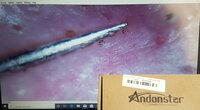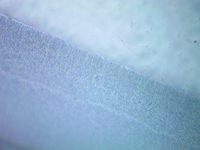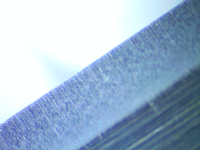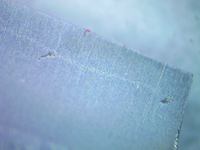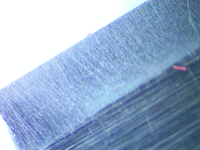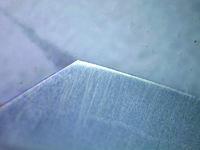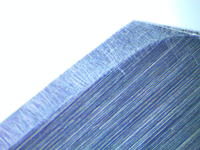- Thread starter
- #21
There looks to be a micro bevel on the razor, which I know practically cannot be the case. What happened there?
This type of damage can actually be seen with a 10-12x loupe (a really good one) when the steel has problems (really major ones). It is exaggerated, so visible on lower magnification, because the edge collapses faster. This doesn't relate to your experiment directly, but it does prove that the damage pattern matches. Hence, yes, hair is damaging to the steel, in that exact pattern, there is no doubt about it.
I feel you should also try to finish the razor on a finishing stone only, and not use pastes and sprays in your stropping routine.. If possible - and then compare the results.
Best of luck!
Sent from my CLT-L29 using Tapatalk
Thanks. I don't know what the thing that looks like a micro bevel is, but microscopy, and interpreting what you get from it, seems to be a bit of a dark art, at least when you're not looking through a glass slide. The lighting is finicky, and the more so the higher you get in magnification. I'd bet that that apparent pattern would vanish if I rotated the razor just a bit (which is of course hard to do) so the light shone on it a bit differently. I may have to experiment with other lighting to supplement the ring light that's on there now. Of course it's possible that the pattern represents something real, but, as you say, an actual microbevel seems very unlikely.
The finishing stone only idea seems good. I can always do the pastes later, after I've gathered the data I want from stones and unpasted leather.


